1. Wu JZ, Jiang N, Lin JM, Liu X. 2020; STYXL1 promotes malignant progression of hepatocellular carcinoma via downregulating CELF2 through the PI3K/Akt pathway. Eur Rev Med Pharmacol Sci. 24:2977–2985. DOI:
10.26355/eurrev_202003_20662. PMID:
32271415.
2. Ma W, Zhu D, Li J, Chen X, Xie W, Jiang X, Wu L, Wang G, Xiao Y, Liu Z, Wang F, Li A, Shao D, Dong W, Liu W, Yuan Y. 2020; Coating biomimetic nanoparticles with chimeric antigen receptor T cell-membrane provides high specificity for hepatocellular carcinoma photothermal therapy treatment. Theranostics. 10:1281–1295. DOI:
10.7150/thno.40291. PMID:
31938065. PMCID:
PMC6956810.

4. Shao Y, Song X, Jiang W, Chen Y, Ning Z, Gu W, Jiang J. 2019; MicroRNA-621 acts as a tumor radiosensitizer by directly targeting SETDB1 in hepatocellular carcinoma. Mol Ther. 27:355–364. DOI:
10.1016/j.ymthe.2018.11.005. PMID:
30503969. PMCID:
PMC6369664.

5. Padthaisong S, Thanee M, Namwat N, Phetcharaburanin J, Klanrit P, Khuntikeo N, Titapun A, Sungkhamanon S, Saya H, Loilome W. 2020; Overexpression of a panel of cancer stem cell markers enhances the predictive capability of the progression and recurrence in the early stage cholangio-carcinoma. J Transl Med. 18:64. DOI:
10.1186/s12967-020-02243-w. PMID:
32039729. PMCID:
PMC7008521.

6. Wu Y, Zhang J, Zhang X, Zhou H, Liu G, Li Q. 2020; Cancer stem cells: a potential breakthrough in HCC-targeted therapy. Front Pharmacol. 11:198. DOI:
10.3389/fphar.2020.00198. PMID:
32210805. PMCID:
PMC7068598.

7. Rada T, Santos TC, Marques AP, Correlo VM, Frias AM, Castro AG, Neves NM, Gomes ME, Reis RL. 2012; Osteogenic differentiation of two distinct subpopulations of human adipose-derived stem cells: an in vitro and in vivo study. J Tissue Eng Regen Med. 6:1–11. DOI:
10.1002/term.388. PMID:
21294275.

10. Zhang Y, Shi K, Liu H, Chen W, Luo Y, Wei X, Wu Z. 2020; miR-4458 inhibits the epithelial-mesenchymal transition of hepatocellular carcinoma cells by suppressing the TGF-β signaling pathway via targeting TGFBR1. Acta Biochim Biophys Sin (Shanghai). 52:554–562. DOI:
10.1093/abbs/gmaa029. PMID:
32324847.

11. Yang H, Fang F, Chang R, Yang L. 2013; MicroRNA-140-5p suppresses tumor growth and metastasis by targeting transforming growth factor β receptor 1 and fibroblast growth factor 9 in hepatocellular carcinoma. Hepatology. 58:205–217. DOI:
10.1002/hep.26315. PMID:
23401231.

12. Takata A, Otsuka M, Yoshikawa T, Kishikawa T, Hikiba Y, Obi S, Goto T, Kang YJ, Maeda S, Yoshida H, Omata M, Asahara H, Koike K. 2013; MicroRNA-140 acts as a liver tumor suppressor by controlling NF-κB activity by directly targeting DNA methyltransferase 1 (Dnmt1) expression. Hepatology. 57:162–170. DOI:
10.1002/hep.26011. PMID:
22898998. PMCID:
PMC3521841.

13. Lu Z, Yu Y, Ding X, Jin D, Wang G, Zhou Y, Zhu Y, Na L, He Y, Wang Q. 2020; LncRNA FLJ33360 accelerates the metastasis in hepatocellular carcinoma by targeting miRNA-140/MMP9 axis. Am J Transl Res. 12:583–591. PMID:
32194906. PMCID:
PMC7061837.
14. Mahboudi H, Soleimani M, Hanaee-Ahvaz H, Ghanbarian H, Bandehpour M, Enderami SE, Kazemi B. 2018; New approach for differentiation of bone marrow mesenchymal stem cells toward chondrocyte cells with overexpression of MicroRNA-140. ASAIO J. 64:662–672. DOI:
10.1097/MAT.0000000000000688. PMID:
29040159.

15. Liu X, Li M, Wang X, Dang Z, Yu L, Wang X, Jiang Y, Yang Z. 2019; Effects of adjuvant traditional Chinese medicine therapy on long-term survival in patients with hepato-cellular carcinoma. Phytomedicine. 62:152930. DOI:
10.1016/j.phymed.2019.152930. PMID:
31128485.

16. Jianxin C, Qingxia X, Junhui W, Qinhong Z. 2017; A case of recurrent hepatocellular carcinoma acquiring complete remission of target lesion with treatment with traditional Chinese medicine. Integr Cancer Ther. 16:597–604. DOI:
10.1177/1534735416660617. PMID:
27444311. PMCID:
PMC5739135.

17. Zhang T, Yang Y, Wang B, Zheng X, Wang L, Feng X, Li G, Shi J, Cao N. 2019; Meta-analysis of influences of Biejiajian Pill combined with entecavir on serum liver fibrosis markers of compensatory period of hepatitis b cirrhosis: protocol of systematic review and meta-analysis. Medicine (Baltimore). 98:e18458. DOI:
10.1097/MD.0000000000018458. PMID:
31861022. PMCID:
PMC6940166.
18. Chang XF, Song CH, Chen T, Chen HY, Han LM. 2015; Effect of BieJiaJianWan on human hepatocellular carcinoma cells in Bel-7402 through MAPK signal pathway. J Gannan Med Coll. 35:663–666.
20. Serakinci N, Tulay P, Kalkan R. 2018; Role of mesenchymal stem cells in cancer development and their use in cancer therapy. Adv Exp Med Biol. 1083:45–62. DOI:
10.1007/5584_2017_64. PMID:
28730382.

21. Yoshida A, Kitajima S, Li F, Cheng C, Takegami Y, Kohno S, Wan YS, Hayashi N, Muranaka H, Nishimoto Y, Nagatani N, Nishiuchi T, Thai TC, Suzuki S, Nakao S, Tanaka T, Hirose O, Barbie DA, Takahashi C. 2017; MicroRNA-140 mediates RB tumor suppressor function to control stem cell-like activity through interleukin-6. Oncotarget. 8:13872–13885. DOI:
10.18632/oncotarget.14681. PMID:
28099924. PMCID:
PMC5355146.

22. Wu D, Zhang J, Lu Y, Bo S, Li L, Wang L, Zhang Q, Mao J. 2019; miR-140-5p inhibits the proliferation and enhances the efficacy of doxorubicin to breast cancer stem cells by targeting Wnt1. Cancer Gene Ther. 26:74–82. DOI:
10.1038/s41417-018-0035-0. PMID:
30032164.

24. Hou J, Zhao N, Zhu P, Chang J, Du Y, Shen W. 2020; Irradiated mesenchymal stem cells support stemness maintenance of hepatocellular carcinoma stem cells through Wnt/β-ca-tenin signaling pathway. Cell Biosci. 10:93. DOI:
10.1186/s13578-020-00449-5. PMID:
32774840. PMCID:
PMC7398068.

25. Liu D, Hong Y, Li Y, Hu C, Yip TC, Yu WK, Zhu Y, Fong CC, Wang W, Au SK, Wang S, Yang M. 2020; Targeted destruction of cancer stem cells using multifunctional magnetic nanoparticles that enable combined hyperthermia and chemotherapy. Theranostics. 10:1181–1196. DOI:
10.7150/thno.38989. PMID:
31938059. PMCID:
PMC6956796.

26. Acikgoz E, Tatar C, Oktem G. 2020; Triptolide inhibits CD133
+/CD44
+ colon cancer stem cell growth and migration through triggering apoptosis and represses epithelial-mesenchymal transition via downregulating expressions of snail, slug, and twist. J Cell Biochem. 121:3313–3324. DOI:
10.1002/jcb.29602. PMID:
31904143.

27. Lin Q, Wu Z, Yue X, Yu X, Wang Z, Song X, Xu L, He Y, Ge Y, Tan S, Wang T, Song H, Yuan D, Gong Y, Gao L, Liang X, Ma C. 2020; ZHX2 restricts hepatocellular carcinoma by suppressing stem cell-like traits through KDM2A-mediated H3K36 demethylation. EBioMedicine. 53:102676. DOI:
10.1016/j.ebiom.2020.102676. PMID:
32114388. PMCID:
PMC7047184.

28. Park DJ, Sung PS, Kim JH, Lee GW, Jang JW, Jung ES, Bae SH, Choi JY, Yoon SK. 2020; EpCAM-high liver cancer stem cells resist natural killer cell-mediated cytotoxicity by upregulating CEACAM1. J Immunother Cancer. 8:e000301. DOI:
10.1136/jitc-2019-000301. PMID:
32221015. PMCID:
PMC7206970.

29. Wang ZC, Yang S, Huang JJ, Chen SL, Li QQ, Li Y. 2014; Effect of bone marrow mesenchymal stem cells on the Smad expression of hepatic fibrosis rats. Asian Pac J Trop Med. 7:321–324. DOI:
10.1016/S1995-7645(14)60048-1. PMID:
24507685.

30. Schwartz RE, Reyes M, Koodie L, Jiang Y, Blackstad M, Lund T, Lenvik T, Johnson S, Hu WS, Verfaillie CM. 2002; Multipotent adult progenitor cells from bone marrow differentiate into functional hepatocyte-like cells. J Clin Invest. 109:1291–1302. DOI:
10.1172/JCI0215182. PMID:
12021244. PMCID:
PMC150983.

31. Khakoo AY, Pati S, Anderson SA, Reid W, Elshal MF, Rovira II, Nguyen AT, Malide D, Combs CA, Hall G, Zhang J, Raffeld M, Rogers TB, Stetler-Stevenson W, Frank JA, Reitz M, Finkel T. 2006; Human mesenchymal stem cells exert potent antitumorigenic effects in a model of Kaposi's sarcoma. J Exp Med. 203:1235–1247. DOI:
10.1084/jem.20051921. PMID:
16636132. PMCID:
PMC2121206.

32. Wang ZC, Yang S, Huang JJ, Chen SL, Li QQ, Li Y. 2014; Effect of Rougan Huaqian granules combined with human mesenchymal stem cell transplantation on liver fibrosis in cirrhosis rats. Asian Pac J Trop Med. 7:576–581. DOI:
10.1016/S1995-7645(14)60097-3. PMID:
25063290.

33. Shi S, Zhang M, Guo R, Miao Y, Zhang M, Hu J, Xi Y, Li B. 2014; Feasibility of lentiviral-mediated sodium iodide symporter gene delivery for the efficient monitoring of bone marrow-derived mesenchymal stem cell transplantation and survival. Int J Mol Med. 34:1547–1554. DOI:
10.3892/ijmm.2014.1970. PMID:
25319483.

34. Wen ZX, Huang JJ, Wang ZC. 2019; Research on the transformation of hepatocyte from bone marrow mesenchymal stem cells by Biejiajianwan drug serum. Guiding J Tradit Chin Med Pharm. 25:35–38.
35. Yang S, Li X, Shen W, Hu H, Li C, Han G. 2021; MicroRNA-140 represses esophageal cancer progression via targeting ZEB2 to regulate Wnt/β-catenin pathway. J Surg Res. 257:267–277. DOI:
10.1016/j.jss.2020.07.074. PMID:
32862055.

36. Zhao G, Yin Y, Zhao B. 2020; miR-140-5p is negatively correlated with proliferation, invasion, and tumorigenesis in malignant melanoma by targeting SOX4 via the Wnt/β-catenin and NF-κB cascades. J Cell Physiol. 235:2161–2170. DOI:
10.1002/jcp.29122. PMID:
31385607.

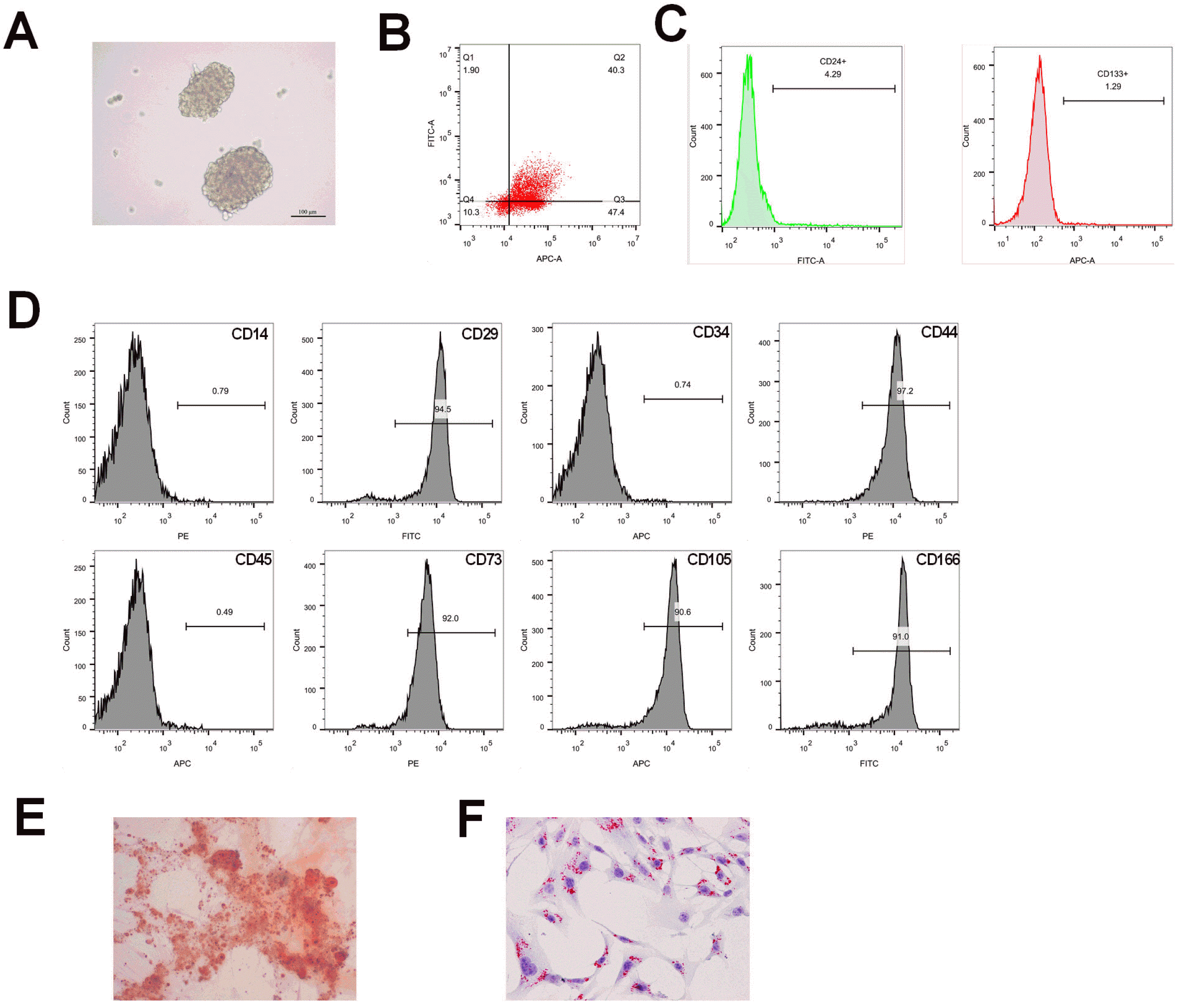
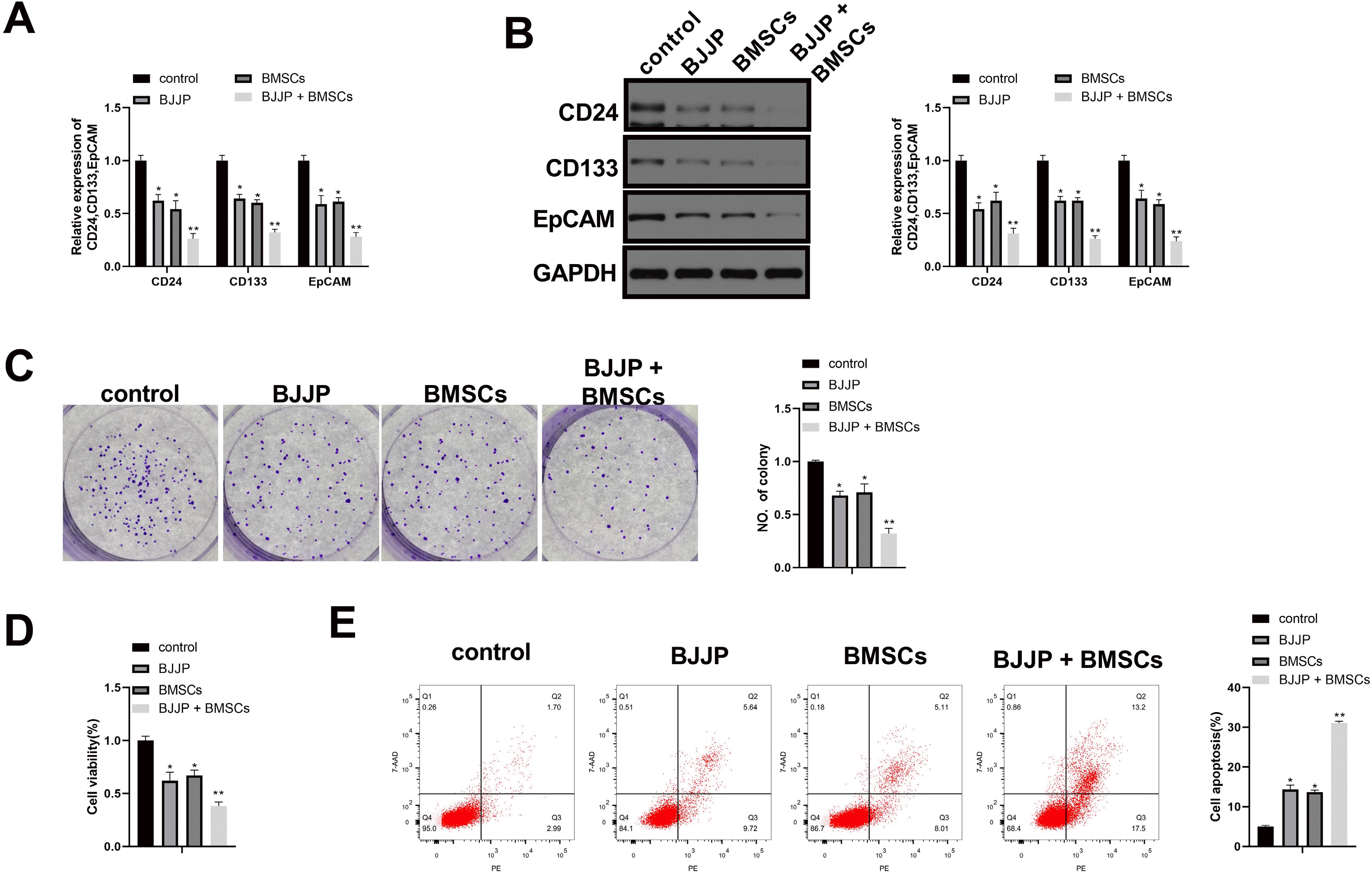
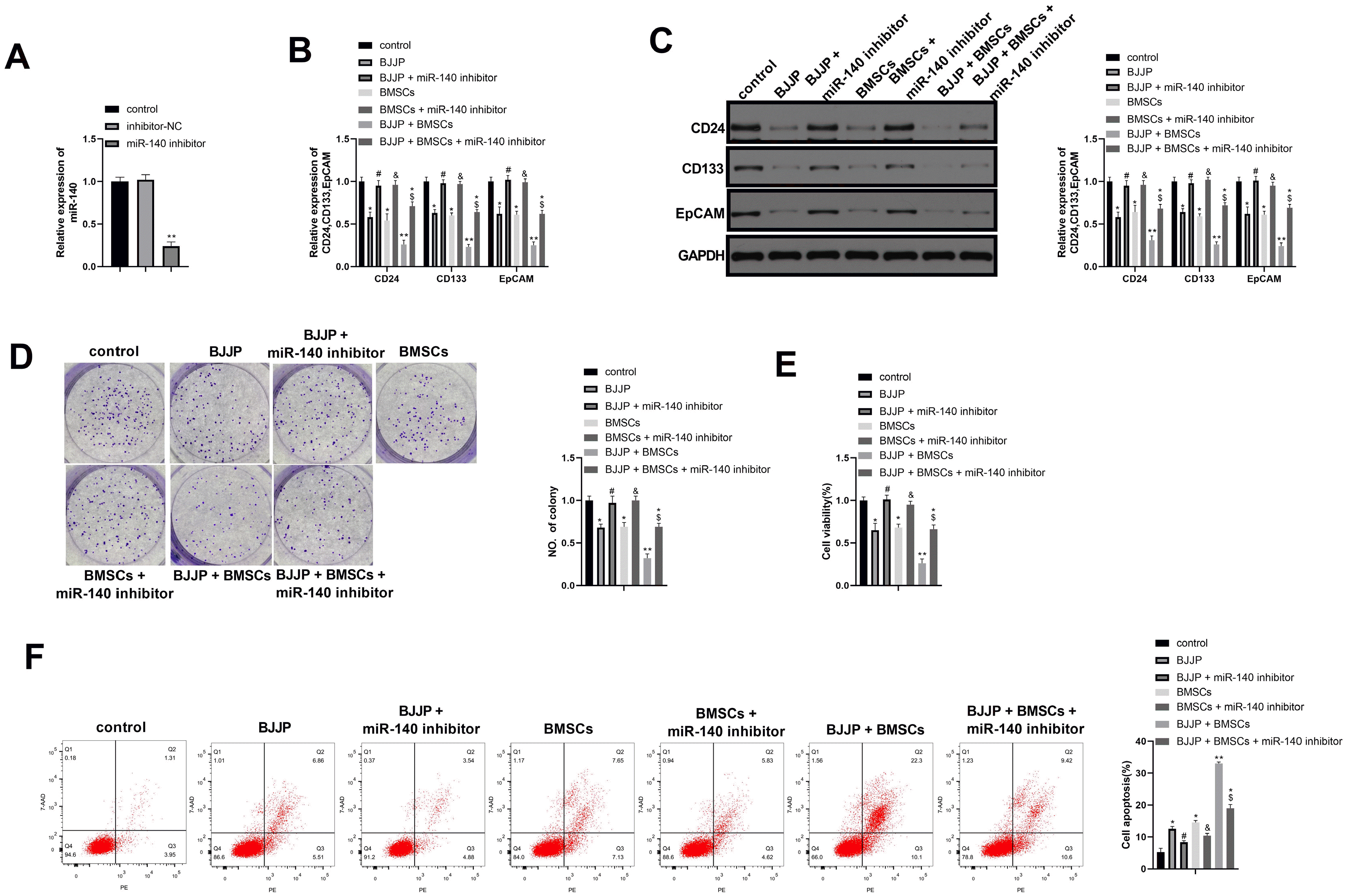
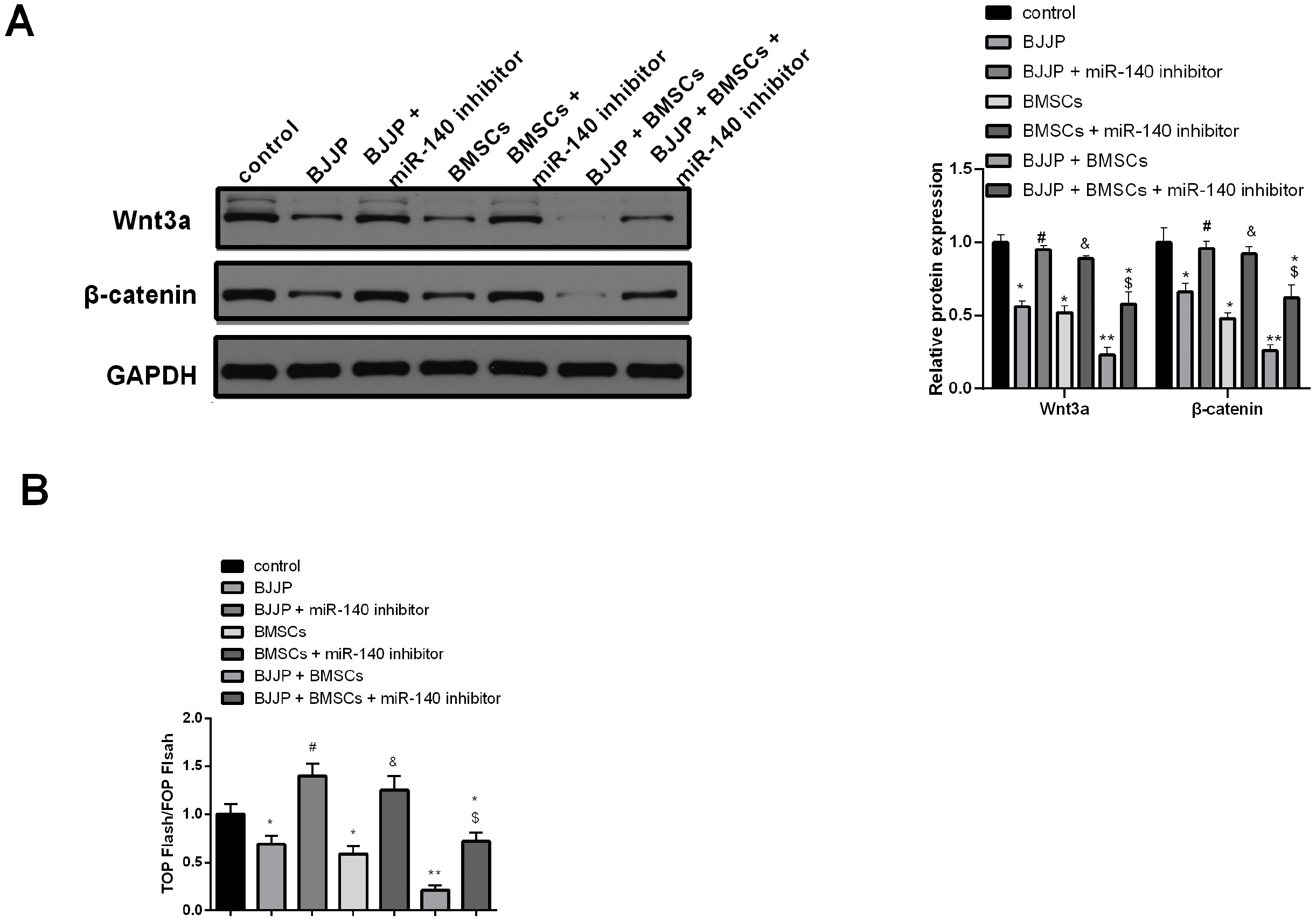




 PDF
PDF Citation
Citation Print
Print


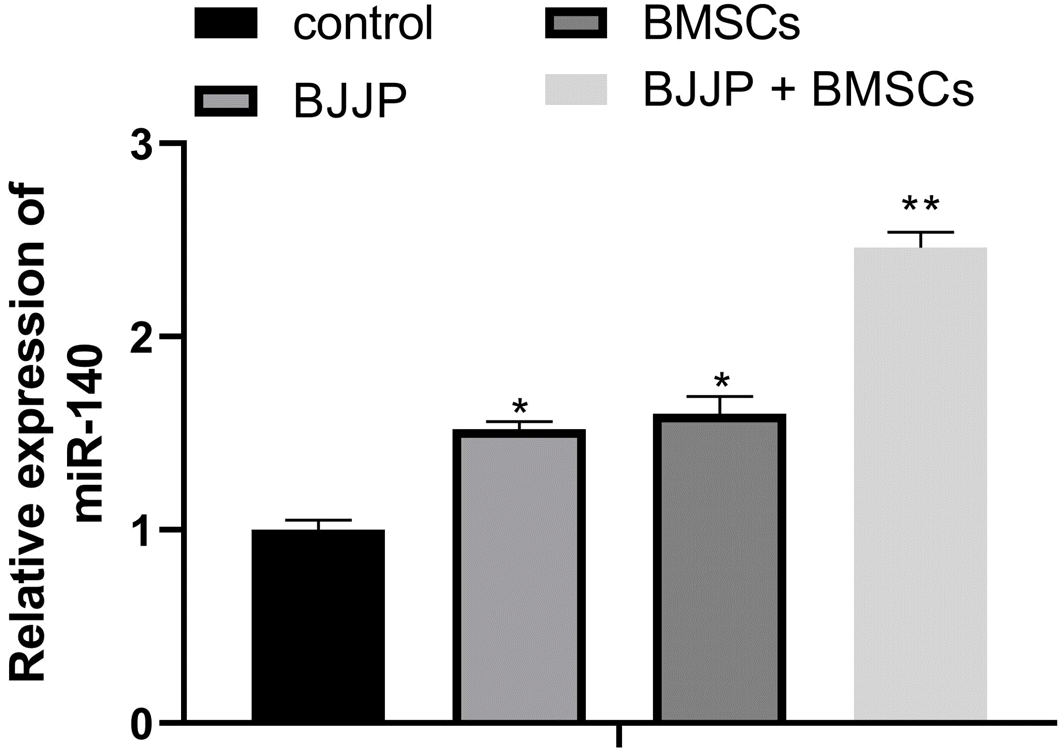
 XML Download
XML Download